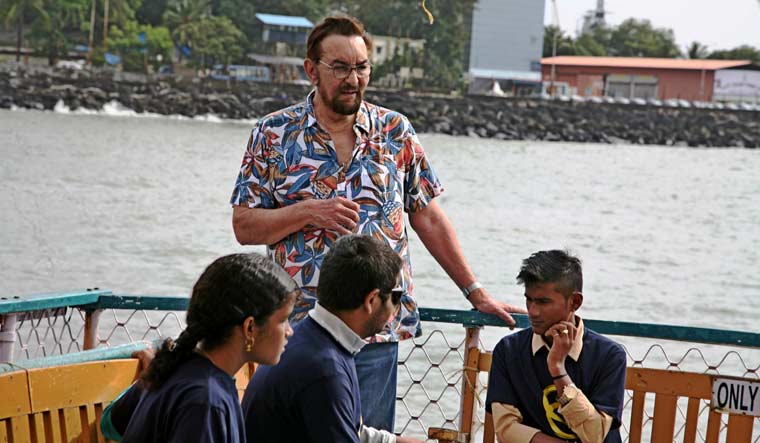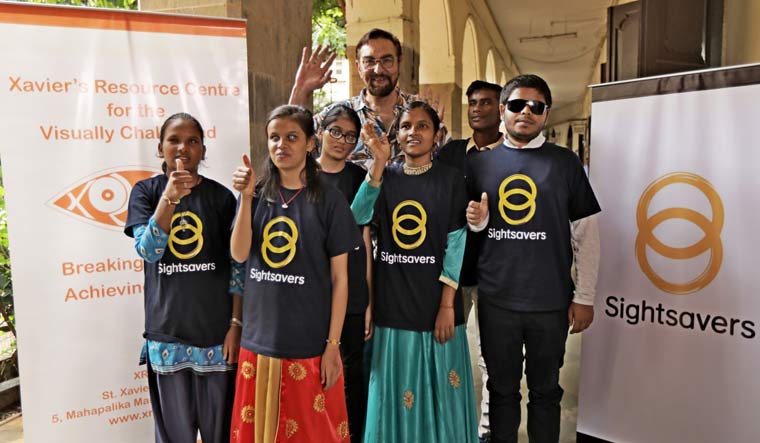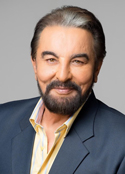When I was 14, Juhu Beach in Bombay was where I first experienced the sea. Foaming white waves crashing towards me washing over my ankles, sand moving stealthily under my feet, gazing in wonder at an endless horizon and a limitless sky. Oh, the vastness of it all! I fell in love with the sea and have loved it ever since. When Sightsavers India asked if I’d give six visually impaired children their first experience of the sea, I jumped at the idea. I remembered my own experience as if it was yesterday, and was happy to share it with them.
Juhu Beach was to be the climax of their day in the big city. We began the day aboard a double deck ferry at the Gateway of India riding the waves of the Arabian Sea, far from where they lived. Rohit and two girls, Hira and Kiran, came from remote hamlets in Jharkhand. Pappu, Sakshi and Sulochana came from small villages in Rajasthan. I asked them to imagine an endless expanse of water which met the sky, far away, at a line called the “horizon”. Not being able to see that horizon took its toll almost immediately. Sakshi and Sulochana went downstairs and deposited their breakfast on the deck in instalments. The four survivors above enjoyed the movement of the sea. Kiran said it reminded her of her mother putting her to sleep. Rohit said the air felt nice, just more heavy. Pappu felt queasy but his excitement overcame it. Hira enjoyed the sway with her unseeing eyes closed.
The children asked me what else there was to see. I told them about the Gateway of India. It was built to welcome the “Maharaja of England” in 1911 because he was the first English king to come to India even though England had ruled India for 200 years. What does it look like, asked Sakshi. Like a very tall door between two huge pillars, built with huge blocks of stone from Gwalior. Close to it, the Taj Mahal Palace Hotel, “which looks like the palace of a king”, was India’s oldest and grandest hotel. It was built by Jamshet ji Tata, the man who started the Tata company, because the best hotel in the city would not let Indians enter. Rohit wanted to know when it was built―1903. It was the first building in Bombay―as Mumbai was called then―to have electricity. When the Taj opened, it made Indians feel proud. But it welcomed everybody, even the English. Jamshet ji Tata believed in inclusion.
“Inclusion” is a major theme for Sightsavers India. Over the last decade their Inclusive Education programme has persuaded mainstream schools to admit over 25,000 visually impaired children, by enabling them with the latest technology and books in braille. And the best is yet to come. Computers with scanners can now read books to the blind with Optical Recognition Technology. This was demonstrated brilliantly by Dr Sam Taraporevala and Ketan Kothari, both blind, at the Xavier’s Resource Centre for the Visually Challenged (XRCVC). The children played with their high-tech devices, thrilled. Kiran and Rohit said they wanted to become teachers of “computers and braille”.

On the way to Juhu, we made a pit-stop for chocolate ice cream at Sukh Sagar on Marine Drive, which is often called “the Queen’s Necklace”. Why, asked Hira. Because the road looks like a half-circle around the sea. And at night, when its lights come on, it looks like a necklace that’s made for a queen. They got the picture.
The monsoon was sprinkling the beach with warm rain when we finally reached Juhu. We were all very energised by it. Together we walked towards the welcoming roar of waves. The children jumped and squealed as the sea washed over their ankles, again and again. I asked them to taste the salty sea. “Khara!” they exclaimed in surprise. We walked in deeper. They felt the power of the sea as it pulled at them and moved the sand beneath their feet. They laughed and giggled with excitement. It was a whole new experience, far from the distant villages from which they came. It was an unforgettable day.
Sightsavers had opened yet another world for them. As it has for five million people with free eye operations; for 35 million with free eye treatments; for the 50,000 truck drivers with free spectacles to make India’s roads safer for all. That’s why I support it as their brand ambassador. I ask all blessed with the miracle of sight to support www.sightsaversindia.in too.
Kabir Bedi is an actor, presenter, commentator, writer and producer.




